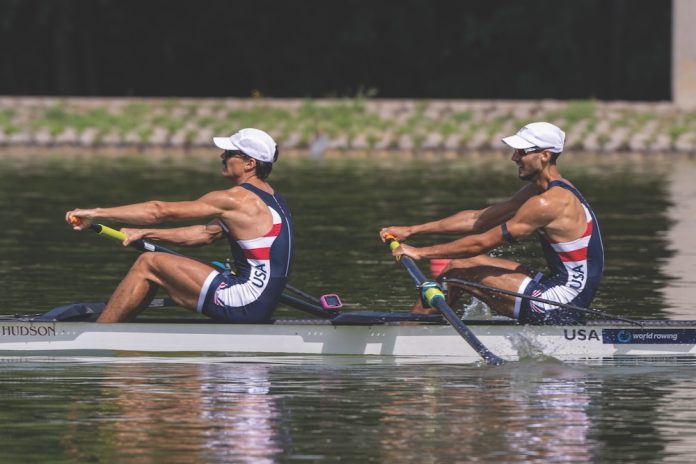By definition, to relax means to slacken or make less rigid, to relieve nervous tension. Effective rowing technique requires economy of power over the race distance. The ability to contract and relax muscles alternately during the stroke cycle allows onegroup of muscles a brief respite while another group of muscles is working. It’s a form of rotating rest, a process that lessens the stress effect on your mind and body.
To continue reading…
This article is exclusively for Rowing News subscribers. For as little as $5 a month, you can get access to the best quality, independent reporting on all the issues that matter to the North American rowing community.
Already a subscriber? Login
Gym work is an effective way to learn how to activate and deactivate muscles so that a lift is performed correctly. Practicing proper lifting technique transfers well to the rowing stroke. For example, when initiating a deadlift, the shoulder blades should be stable and packed. This requires the trapezius muscles to be relaxed and the lats to be engaged in a position similar to how we connect to the handle at the beginning of the drive.
During the recovery, relaxation is active versus simply slack. You need to maintain composure and boat stability but also allow some tension relief for your body parts Rhythmic breathing is a powerful technique for relieving stress. Another technique is a quick body scan that combines breathing with progressive muscle relaxation.
At the finish position, exhale, relax your facial muscles, and let your hands weight the handle as your arms move away. Loosen your fingers once the oar is feathered in the oarlock or try simply lifting your pinky finger off the handle. Then rest your upper-body weight, sit tall, and allow the knees to rise softly so your legs can prepare for the next drive. Begin to inhale.
Notice when your feet contact the foot stretcher and begin to square the blade with the lightest of touch until you bury the blade, ready for the next drive.
Marlene Royle is the author of Tip of the Blade: Notes on Rowing. She specializes in training for masters rowers. Her coaching service, Roylerow Performance Training Programs, provides the program and support you need to improve your competitive edge. For information, email Marlene at roylerow@aol.com or visit www.roylerow.com.

